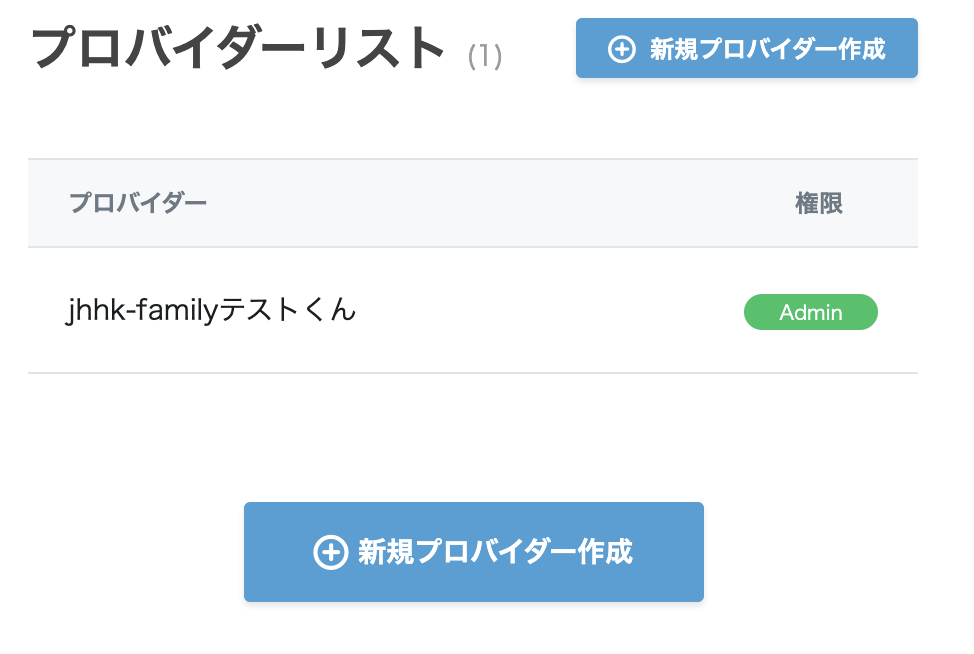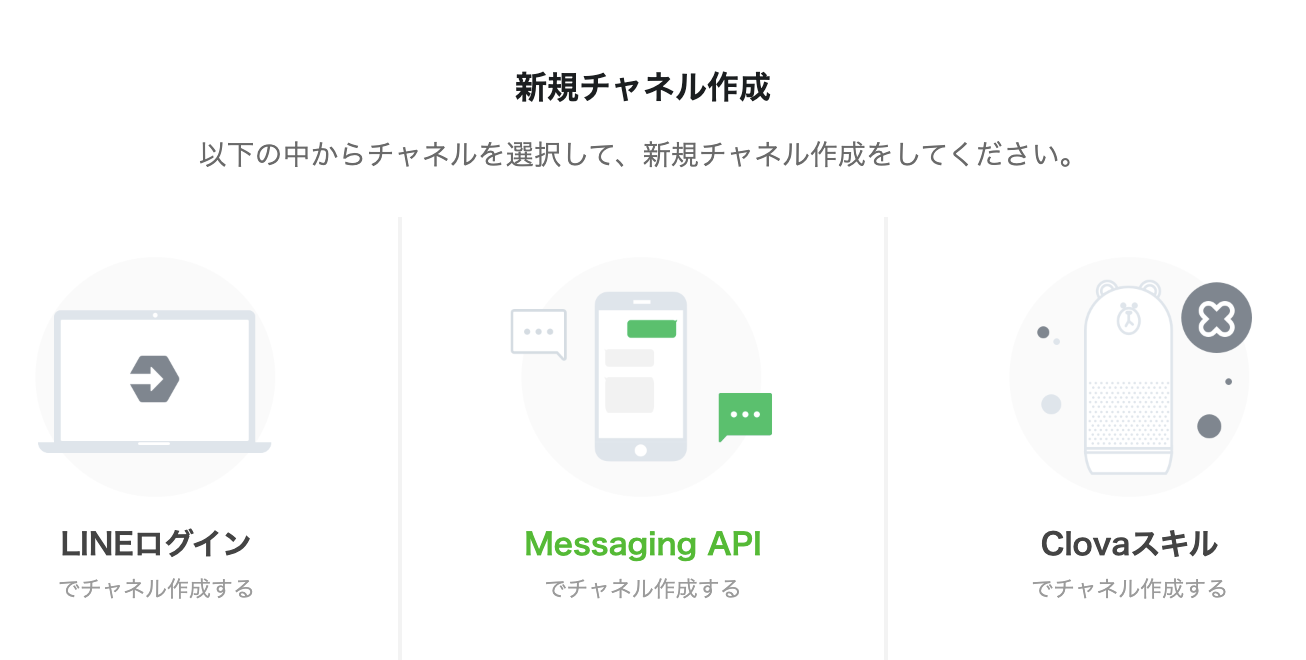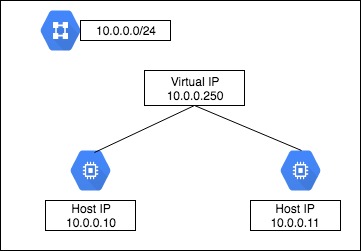作成の記事自体は色々見つかるんだけど、LINE側のWebhockの値が異なっていたりしたので自分メモ
まずはリファレンスをちゃんと読もう!(自戒)
LINE Developers
https://developers.line.biz/ja/ から
BOTユーザーは別に作るので、ここへの登録は個人のLINEアカウントで問題ない
ログイン後、新規プロバイダーを作成する

次にチャンネルを作成する
今回は普通(?)のチャットボットを作るので、Massaging APIを選択する

必要な情報を入力してチャンネルを作成する
作成後に、アプリを作る上で必要な情報は
1. Channel Secret
2. アクセストークン (ロングターム)
の2つ


Webhook送信を有効にし、Webhookを受け入れるURLを入力する(httpsのみ)

botサーバー
nginx + flaskで作りました
OSの環境変数(.bash_profileなど)にLINE_CHANNEL_SECRETとLINE_CHANNEL_ACCESS_TOKENを設定します。
書いた後は反映を忘れずに!
export LINE_CHANNEL_SECRET=xxxxxxxxxx
export LINE_CHANNEL_ACCESS_TOKEN=xxxxxxxxxxxxxxxxxx
nginxのconfigにlocationを追加する
location ~ /何かしら {
proxy_pass http://localhost:8000;
}
flask アプリケーションを作る
#!/usr/bin/env python3.7
import os,json
from flask import Flask, request, make_response
import base64
import hashlib
import hmac
from linebot import (
LineBotApi, WebhookParser
)
from linebot.exceptions import (
InvalidSignatureError
)
from linebot.models import (
MessageEvent, TextMessage, TextSendMessage
)
channel_secret = os.getenv('LINE_CHANNEL_SECRET', None)
channel_access_token = os.getenv('LINE_CHANNEL_ACCESS_TOKEN', None)
if channel_secret is None:
print('Specify LINE_CHANNEL_SECRET as environment variable.')
sys.exit(1)
if channel_access_token is None:
print('Specify LINE_CHANNEL_ACCESS_TOKEN as environment variable.')
sys.exit(1)
line_bot_api = LineBotApi(channel_access_token)
# Flask
app = Flask(__name__)
@app.route('/line-bot/api',methods=['post'])
def application():
environ = request.headers
data = json.loads(request.data)
# シグネチャ検証(とりあえずマスク)
# signature = environ['X_LINE_SIGNATURE']
# hash = hmac.new(channel_secret.encode('utf-8'),
# data.encode('utf-8'), hashlib.sha256).digest()
# signature_from_data = base64.b64encode(hash)
#
# print(signature)
# print(signature_from_data)
#
# get request body as text
content_length = int(environ['CONTENT_LENGTH'])
# 画像かスタンプを送られた場合
if 'text' not in data["events"][0]["message"]:
body = '画像、スタンプは送らないで!'
# 教えて or おしえてと言われたら自分で探せと返す
elif 'おしえ' in data["events"][0]["message"]["text"] or '教え' in data["events"][0]["message"]["text"]:
body = 'オッケーグーグル!\nhttps://www.google.com/'
# 感謝の言葉を言われたら嬉しいよね
elif 'ありがとう' in data["events"][0]["message"]["text"]:
body = 'お役に立てて何よりです'
# それ以外は、とりあえずオウム返し
else:
body = data["events"][0]["message"]["text"]
for i in data["events"]:
print(i)
line_bot_api.reply_message(
i["replyToken"],
TextSendMessage(text=body)
)
return make_response('ok'), 200
if __name__ == '__main__':
app.run(host='0.0.0.0', port=8000)
作成後、flaskアプリケーションを起動する
スマホでLINEを起動し、LINEDeveloperのチャンネルに表示されているQRコードを読み込んで友達追加する
(確認していたら、娘からスマホを取り上げられて遊ばれた…)



